

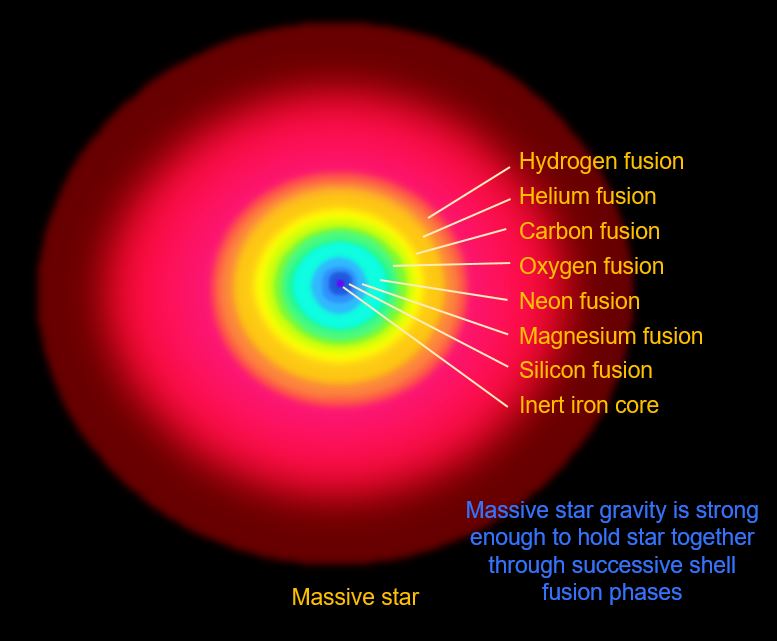
- Element fuses in the core until the core fills with the product of the fusion (ash)
- Core fusion ceases
- Shell fusion continues until the core heats up for the ash to begin fusion
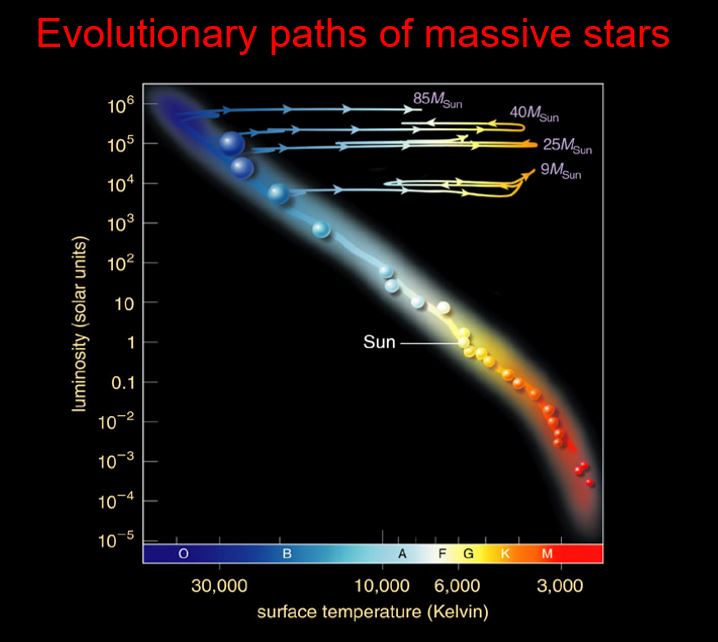
The evolutionary tracks of massive stars follow relatively horizontal paths on the HR diagram. This means that their luminosities stay relatively constant. Their temperatures loop back and forth as successive shell and core fusion takes place.
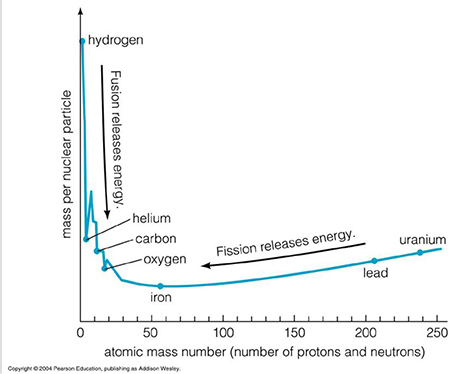
© 2005 Pearson Prentice Hall, Inc
This diagram shows the mass per nucleon of elements. Recall that when hydrogen fuses into helium, the helium nucleus weighs less than the protons and neutrons that went into making it. Some of the lost mass is converted into binding energy, holding the nucleus together. The same thing happens when helium fuses into carbon, and with all of the elements up to iron. Iron nuclei are the most stable nuclei, with the lowest mass per nucleon. For elements more massive than iron, the product of fusion actually weighs more than the constituent particles. In other words, it releases energy to fuse hydrogen into helium, but it would absorb energy to fuse iron.
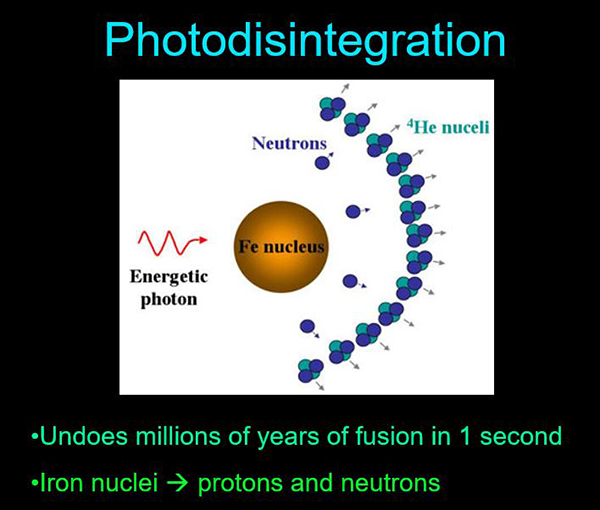
When the core of a massive star fills with iron, the cycle stops. The photons in the core have high enough energy that they actually break up the iron nuclei into alpha particles (helium nuclei) as well as protons and neutrons. This causes a reduction in radiation pressure. As the core contracts, protons and electrons combine to form neutrons in a process called electron capture. This further reduces the pressure, since there are fewer electrons to produce electron degeneracy pressure. The huge drop in pressure causes the core to collapse. The outer material of the star falls onto the core and rebounds in a gigantic explosion, sending shock waves out through the star. The passage of the shock wave through the outer layers of the star triggers fusion to happen. The heaviest elements, iron and above, are only created during the supernova explosion. The outer envelope, with these heavy elements, is blasted out into space, the material forming a nebula, which will eventually mix with other surrounding matter and form the basis for the next generation of stars and planets to be formed.
Some of the matter falls back onto the core, adding to its mass. With the increase of the numbers of neutrons, a new kind of quantum mechanical pressure arises, neutron degeneracy pressure. If the neutron degeneracy pressure is strong enough to withstand the immense pull of gravity in the collapsed core, the collapse halts and the core remains as a neutron star. If the core is massive enough, even neutron degeneracy pressure is not strong enough to halt the collapse, and the core collapses into a black hole.
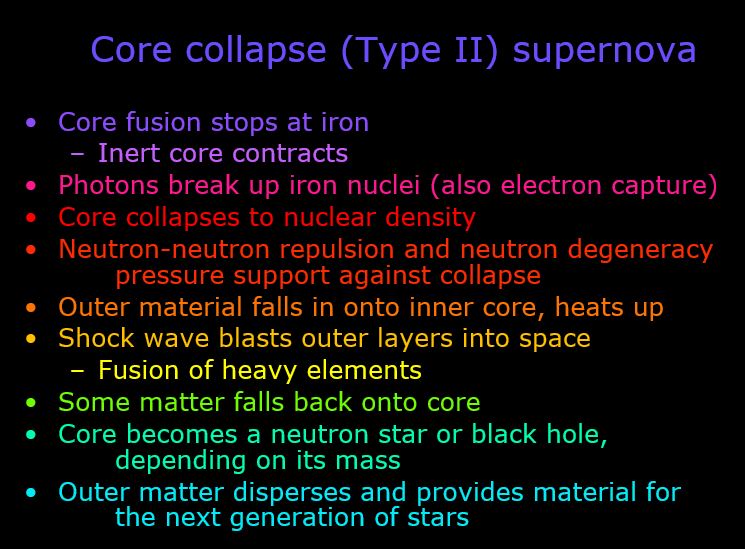
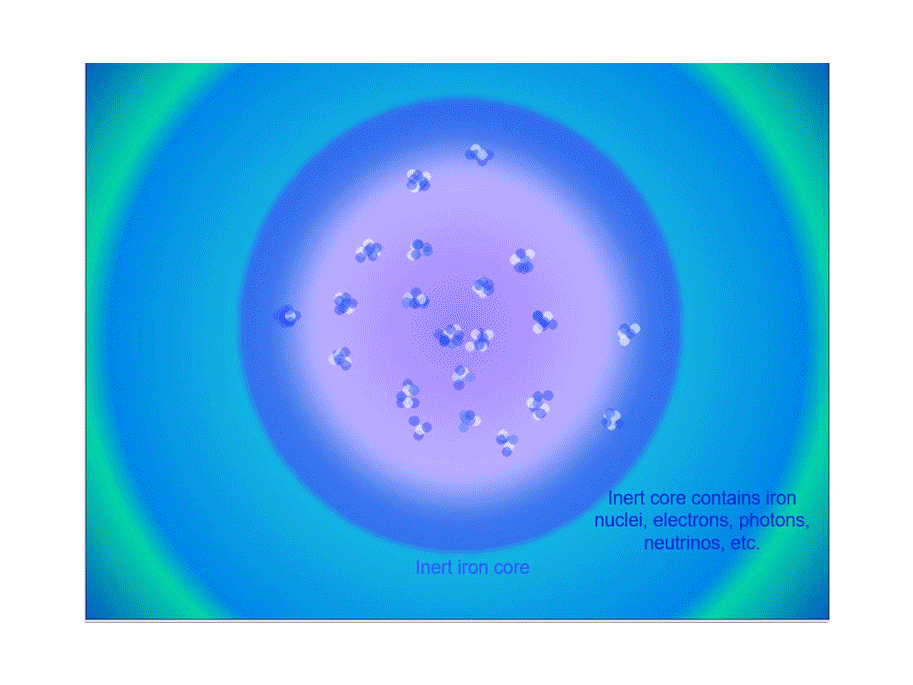
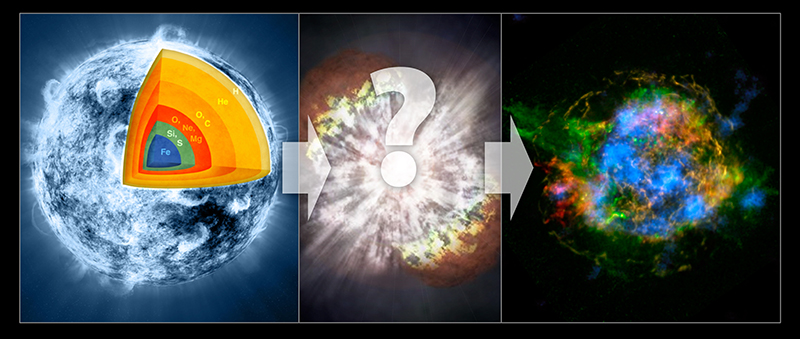
This simulation shows what may happen when a star goes supernova. The sloshing in the early stages of the explosion explains some of the features seen in the supernova remnants.
This 3-D flythrough of the Veil Nebula from NASA shows what it would look like if you could witness a supernova firsthand and up close.

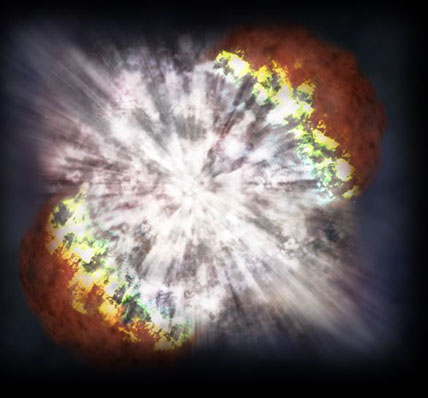
For extremely massive stars, over 140 times the mass of the sun, another kind of supernova event occurs. These ultramassive stars do not undergo fusion at successively heavier elements. The photons in their cores have such high energies that pair production happens before oxygen fusion can set in. Pair production happens when photons carry enough energy to produce matter-antimatter particle pairs, typically electrons and positrons. The energy of the photon goes into producing the particle pairs, which reduces the radiation pressure. This loss of pressure causes the oxygen fusion to happen explosively, blowing up the whole star in the process. Not all ultramassive stars undergo this fate, possibly because the intense stellar winds from these stars can carry off so much mass that the stars become candidates for core-collaps supernovae.
Recall that a sunlike star stays on the main sequence for most of its life, until the core fills with helium. At this point, the core is not hot enough for helium to fuse. A helium nucleus has two protons, as opposed to one proton in a hydrogen nucleus, so a helium nucleus must be moving considerably faster to overcome the electromagnetic repulsion for fusion to occur. As the core fills up with helium "ash," fusion slows and eventually stops in the core. With the lack of radiation pressure, the core contracts. The contraction causes it to heat up. Hydrogen fusion takes place around the core. The core continues to heat up until helium fusion in the core begins, explosively, in the helium flash.
In a star much more massive than the sun, the early evolution is fundamentally the same, except that it burns through its core hydrogen faster. The same process happens, the core contracts and heats up and hydrogen shell fusion begins. When helium core fusion in a massive star starts, it doesn't happen explosively. The core is less dense, so electron degeneracy pressure is not as dominant. The gas pressure increases with temperature, and overall gravitational force is stronger.
The helium fuses in the core, with hydrogen shell fusion, until the core fills with carbon ash. Again, core fusion stops, the core contracts and heats up, helium shell fusion begins. When the core gets hot enough, carbon fusion begins in the core.
Carbon fusion continues in the core until the core fills with oxygen ash. The cycle repeats through heavier and heavier elements. The time for each successive step in the cycle gets shorter and shorter.